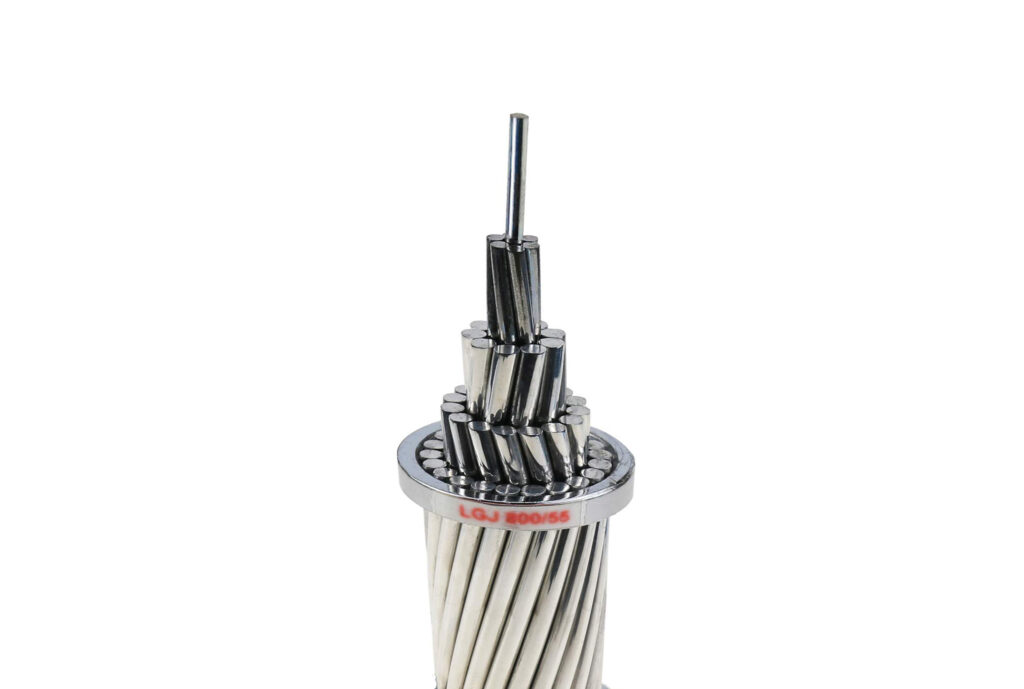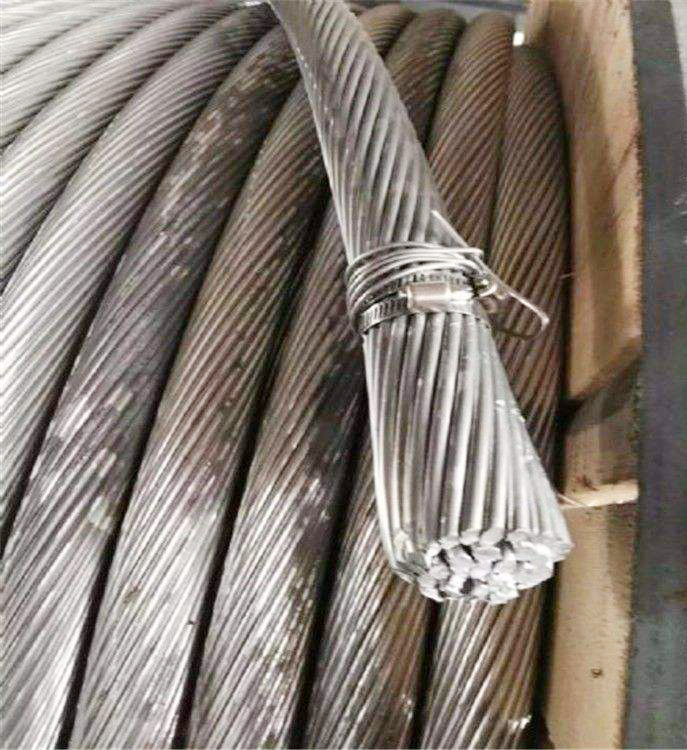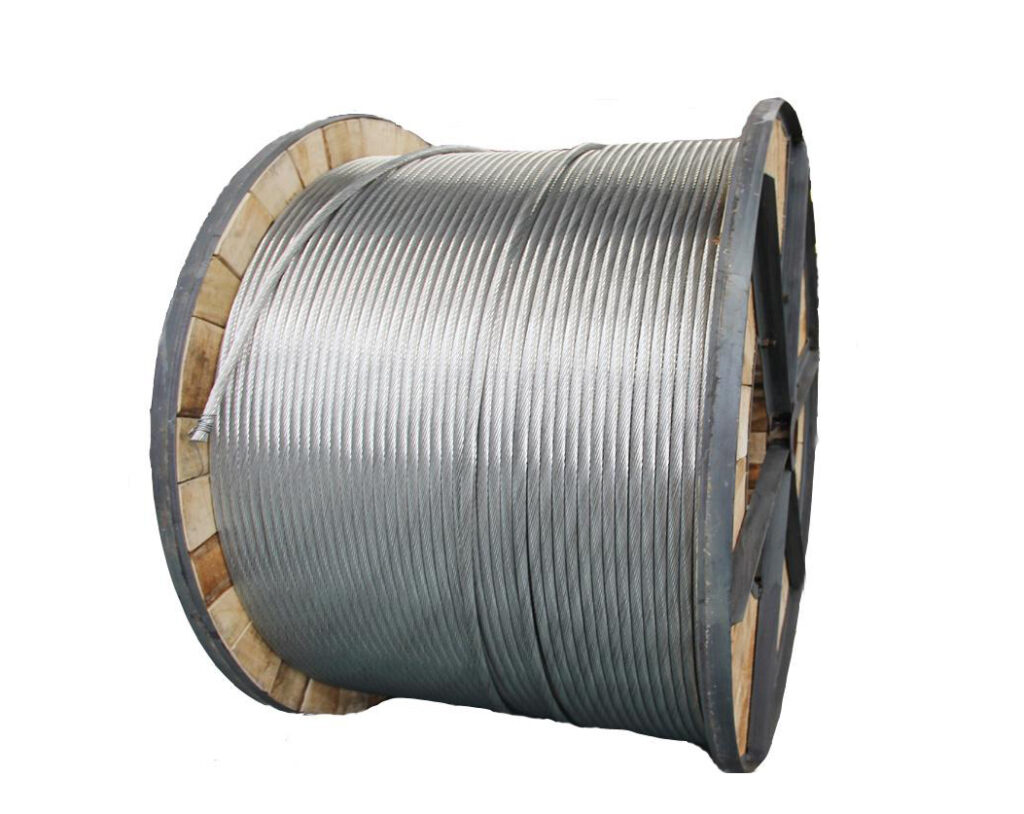Cable products with only conductors without any insulation layer are called “bare wires and bare conductor products”. In order to ensure the current flow along the wire and electrical safety, external insulation suitable for the line voltage must be installed during installation, such as space separation, insulator support, etc. Therefore, this type of product itself does not indicate “use voltage”.
1. Bare single wire
Refers to non-ferrous metal single wires of different materials and sizes, which can be divided into round single wires (copper, aluminum and aluminum alloys cable), flat wires (copper, aluminum and their alloys), single wires with metal plating (tin, silver, nickel) and Bimetallic wires (aluminum-clad steel, copper-clad aluminum, copper-clad steel), etc.
Most of these products are used as materials for the next production of wire and cable products.

2. Bare stranded wire
This is the leading product in this category. Because it is always erected on a pole, it is customarily called an overhead wire. Overhead conductors are not divided into voltage levels. In principle, the same series of conductors can be used from low voltage, medium voltage, high voltage and even ultra high voltage. However, the 330-500kv level has special requirements for the outer diameter of the wire and the surface finish to reduce the corona on the wire surface (that is, the electric field makes the surrounding local air electrically dissociate, which will increase the line loss.
Although the overhead wire structure is simple, its function is extremely important. In the power network, its line length accounts for more than 90% of the total, especially the 110kv-500kv high-voltage transmission and distribution lines. Bare stranded wire can be divided into three types from the structural composition.
One is stranded with a single wire of a single metal material, such as aluminum stranded wire, copper stranded wire, aluminum alloy stranded wire, etc.;

The second type is ACSR cable ,which uses steel stranded wire as the core wire to increase the tensile strength, and the steel core aluminum stranded wire is twisted with one or several layers of aluminum wire or aluminum alloy wire ;The third type is stranded wire made of bimetallic single wire, such as aluminum-clad steel stranded wire.
Steel core aluminum stranded wire (ACSR) is the most widely used variety. Because the steel core can withstand the tensile force suspended on the pole, the spacing between poles can be increased to reduce investment (especially high-voltage lines), extend the life of the wire, and enhance safety.
If there is corrosive gas around the laying line (such as salt spray at the seaside, chemical plant area), anticorrosive steel core aluminum stranded wire coated with anticorrosive paint should be used.
The development trend of new overhead wire and cables products is: ①Increase the tensile strength and vibration resistance without increasing the weight of the wire, such as high-strength aluminum alloy stranded wire, self-damping (anti-vibration) wire, etc.; ②Increase the long-term working temperature of the wire Or conductivity to increase the transmission capacity, such as double-capacity wire, etc.; ③Anti-icing and snow wire to prevent the surface of the wire from freezing in cold areas.
3. Soft wiring and braided wire
This is a kind of special purpose products with a lot of varieties but a small amount; such as brush wires of electric machinery, parallel wires of batteries, antennas, ground wires and shielding nets. This kind of product is made of thin copper single wire stranded and twisted; battery parallel wires are generally made into flat shape (commonly known as braided wire); shielding net sets are woven and sheathed outside the wires that require shielding.

4. Profiles and profiles
The cross-sectional shape of the product is different, and the product that is not round is called the profile; the product that is not used with a larger length is called the profile. According to its purpose, it can be divided into three types:
① As copper and aluminum busbars for high-current bus bars (also called bus bars). Most of them are flat, and some are made into hollow rectangles and semi-arches. Used in power plants and substations to transmit large-capacity streams; and in switch cabinets. In recent years, insulated bus bars with insulating layers have been developed.
②Wires for catenary. This type of wire is used for overhead wires for electrified railways, urban trams, electric locomotives in tunnels (such as subways, underground mine cars). Due to the large-scale development of urban rail transit lines and electrified railways, the use of catenary wires (commonly known as tram lines, now referred to as contact lines) has doubled. In addition to the technical requirements of the contact wire, in addition to good electrical conductivity, sufficient tensile strength and good weather resistance, excellent wear resistance is also very important, which is directly related to the service life.
③Special-shaped strips are mainly used for commutator components in various motors, as well as blade electrodes of various switches and guillotines. The cross-sectional shape is trapezoidal, unimodal, bimodal, and the material is copper or copper alloy.
